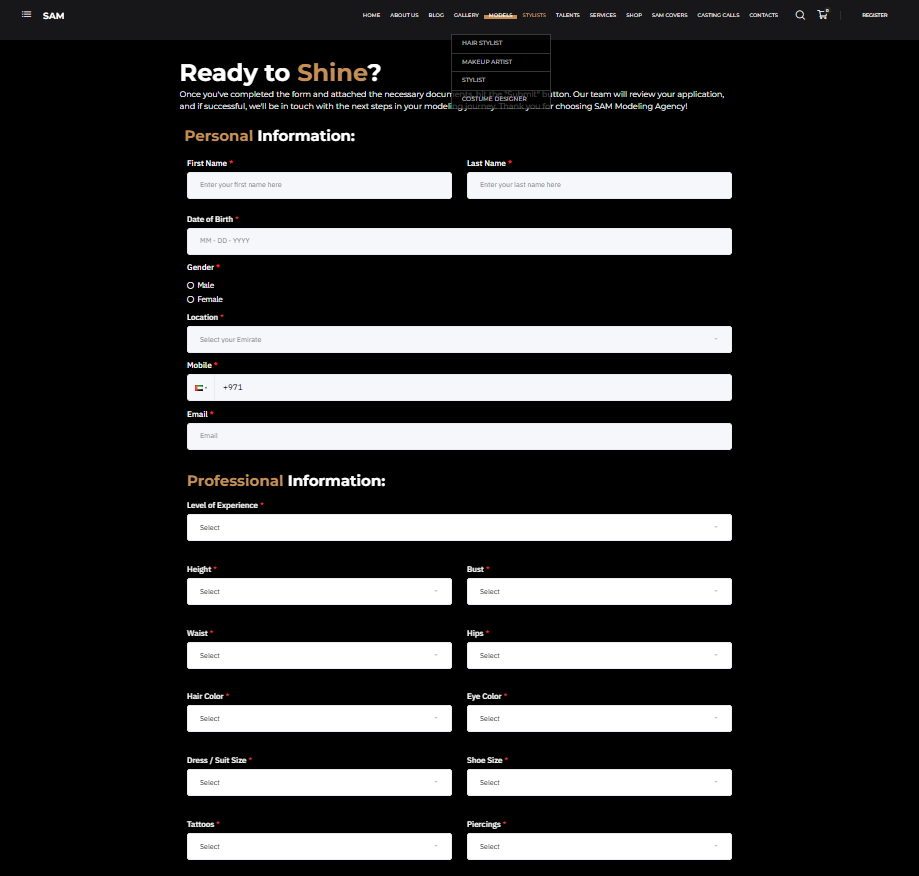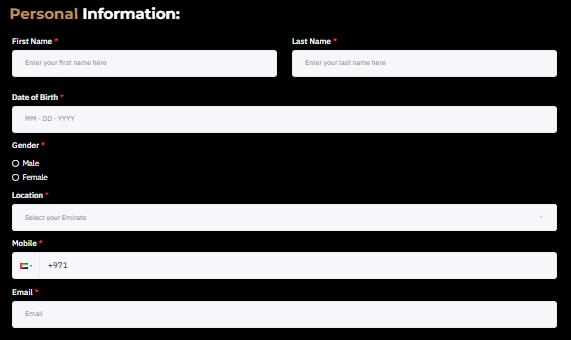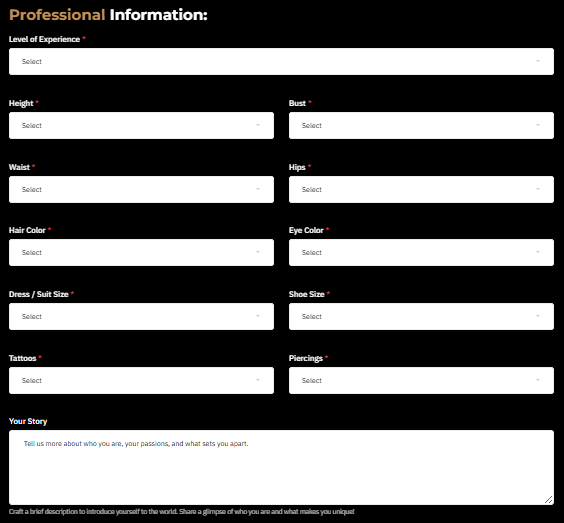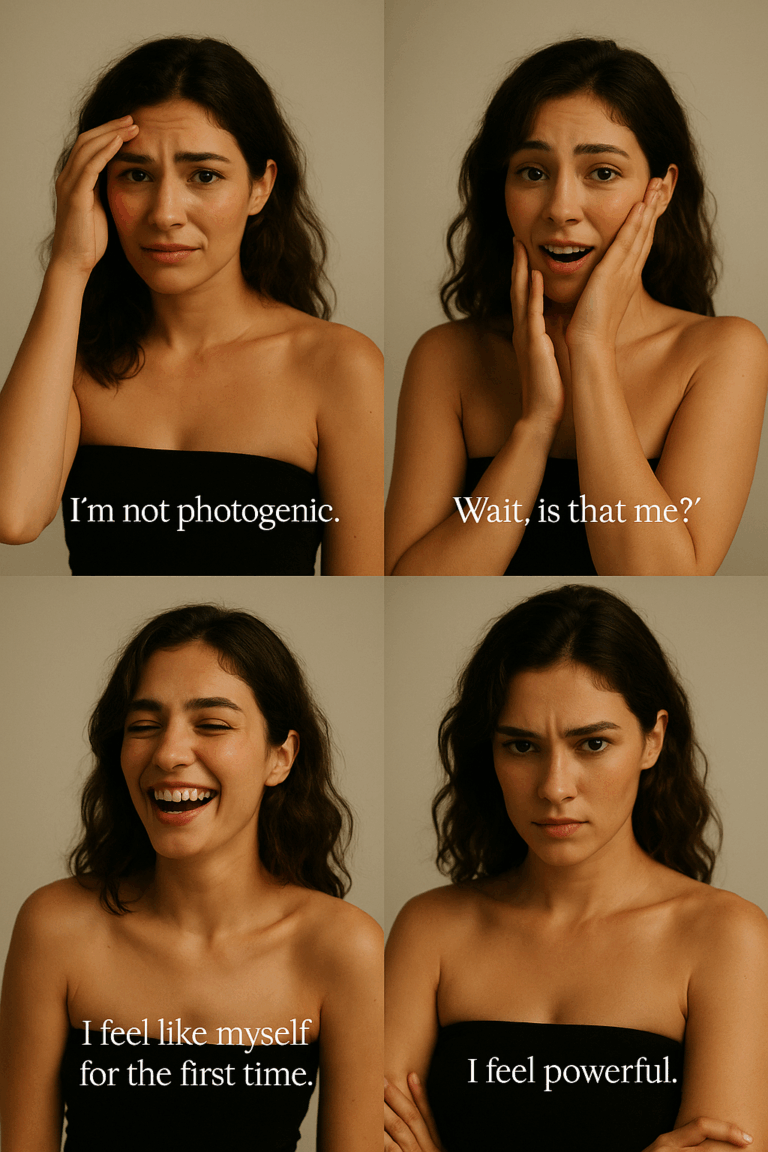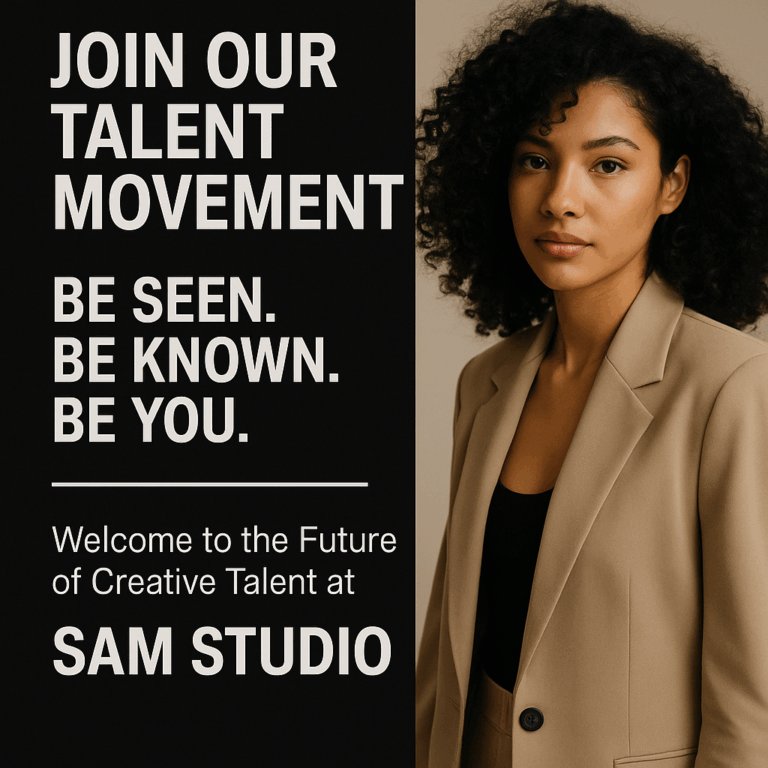How to Build a Modelling Portfolio in Abu Dhabi (Step-by-Step Guide)
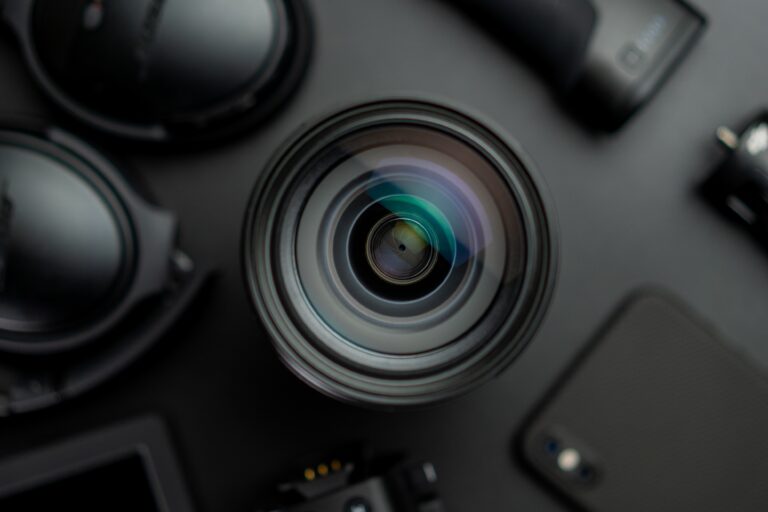
How to Build a Modelling Portfolio in Abu Dhabi (Step-by-Step Guide)
A complete insider guide from SAM Studio — Abu Dhabi’s home for photography, modeling & creative talent.
Read Time: ~11 minutes
Category: Modeling | Photography | Career Growth
Read Time: ~11 minutes
Category: Modeling | Photography | Career Growth
⭐ Introduction: Your Portfolio Is Your Passport
In the world of modeling — especially in a fast-growing creative hub like Abu Dhabi — your modelling portfolio is the document that opens doors.
It’s more than pretty pictures.
It’s your brand, your story, and your first impression to agencies, casting directors, fashion brands, and commercial clients.
But building it the RIGHT way?
That’s what separates models who get booked once…
…and models who get booked every week.
This guide walks you through the exact process we use at SAM Studio to build professional, high-conversion portfolios for aspiring and established models in the UAE.
You will learn:
What photos you must include
How to prepare for your shoot
How to select outfits
What agencies in UAE look for
How many images you need
How to design your comp card
Mistakes that kill opportunities
And a step-by-step build-out plan tailored for Abu Dhabi talent
Let’s begin.
It’s more than pretty pictures.
It’s your brand, your story, and your first impression to agencies, casting directors, fashion brands, and commercial clients.
But building it the RIGHT way?
That’s what separates models who get booked once…
…and models who get booked every week.
This guide walks you through the exact process we use at SAM Studio to build professional, high-conversion portfolios for aspiring and established models in the UAE.
You will learn:
What photos you must include
How to prepare for your shoot
How to select outfits
What agencies in UAE look for
How many images you need
How to design your comp card
Mistakes that kill opportunities
And a step-by-step build-out plan tailored for Abu Dhabi talent
Let’s begin.
📍 Step 1: Understand What a Modelling Portfolio Actually Is
A modelling portfolio is a curated collection of your strongest images showcasing:
Your look
Your versatility
Your posing ability
Your personality
Your market type (fashion, commercial, editorial, fitness, beauty, etc.)
💡 UAE-specific tip:
The UAE’s modelling market is 90% commercial and 10% high-fashion editorial.
So your portfolio must reflect the jobs available in the region.
This means:
✔ Clean beauty shots
✔ Commercial lifestyle
✔ Fashion/editorial test shots
✔ Full body shots
✔ Natural light + studio light combinations
Your look
Your versatility
Your posing ability
Your personality
Your market type (fashion, commercial, editorial, fitness, beauty, etc.)
💡 UAE-specific tip:
The UAE’s modelling market is 90% commercial and 10% high-fashion editorial.
So your portfolio must reflect the jobs available in the region.
This means:
✔ Clean beauty shots
✔ Commercial lifestyle
✔ Fashion/editorial test shots
✔ Full body shots
✔ Natural light + studio light combinations
📍 Step 2: Choose Your Modelling Type (This Determines Your Shoot)
Before planning your portfolio session at SAM Studio, you must define your modelling direction.
Your category could be:
Fashion Model (5’8+ women / 6’0+ men)
Commercial Model (any height, all looks)
Fitness Model
Beauty Model
Plus-Size Model
Catalogue/Lifestyle Model
Influencer Content Model
Each category requires a different balance of looks.
Your category could be:
Fashion Model (5’8+ women / 6’0+ men)
Commercial Model (any height, all looks)
Fitness Model
Beauty Model
Plus-Size Model
Catalogue/Lifestyle Model
Influencer Content Model
Each category requires a different balance of looks.

During your SAM Studio portfolio consultation, we usually guide the model on which category fits best.
📍 Step 3: Prepare Your Body, Skin & Hair (48 Hours Before the Shoot)
Models underestimate how preparation affects the final results.
Do 48 hours before:
Sleep 7–8 hours
Drink more water than usual
Avoid salty food (reduces face puffiness)
Avoid heavy training (muscle swelling)
Moisturize skin twice a day
Do gentle exfoliation
Shape eyebrows naturally
Keep hair clean & natural
Bring with you:
✔ Nude underwear
✔ Black underwear
✔ Seamless bra
✔ White / black tank tops
✔ Heels / clean sneakers (men: clean white shoes)
Do 48 hours before:
Sleep 7–8 hours
Drink more water than usual
Avoid salty food (reduces face puffiness)
Avoid heavy training (muscle swelling)
Moisturize skin twice a day
Do gentle exfoliation
Shape eyebrows naturally
Keep hair clean & natural
Bring with you:
✔ Nude underwear
✔ Black underwear
✔ Seamless bra
✔ White / black tank tops
✔ Heels / clean sneakers (men: clean white shoes)
📍 Step 4: Select Your Outfits (Crucial for UAE Market)
Your outfits must highlight you, not the clothes.
Look 1 — Clean Polaroids / Digitals (Must-Have)
This is what all agencies in UAE require.
Men: fitted tee + jeans
Women: black top + jeans
No makeup / simple hair / natural light
(These can be shot inside SAM Studio’s daylight area or outside using bright natural light.)
Look 2 — Beauty Shot
Close-up on the face. Soft glam or very light makeup. This sells your skin, symmetry and expression.
Look 3 — Classic Fashion Look
Neutral top, tailored pants or simple dress, clean background.
Look 4 — Editorial Look
Bold styling, dramatic lighting, fashion pose.
This is where you show personality and attitude.
Look 5 — Lifestyle Look (Very Important in UAE)
Casual outfit, natural expression, light movement.
This is what sells you for commercial campaigns.
Look 1 — Clean Polaroids / Digitals (Must-Have)
This is what all agencies in UAE require.
Men: fitted tee + jeans
Women: black top + jeans
No makeup / simple hair / natural light
(These can be shot inside SAM Studio’s daylight area or outside using bright natural light.)
Look 2 — Beauty Shot
Close-up on the face. Soft glam or very light makeup. This sells your skin, symmetry and expression.
Look 3 — Classic Fashion Look
Neutral top, tailored pants or simple dress, clean background.
Look 4 — Editorial Look
Bold styling, dramatic lighting, fashion pose.
This is where you show personality and attitude.
Look 5 — Lifestyle Look (Very Important in UAE)
Casual outfit, natural expression, light movement.
This is what sells you for commercial campaigns.
📍 Step 5: Book a Professional Portfolio Shoot in Abu Dhabi
The biggest mistake new models make is:
❌ Asking a friend with a camera to shoot their portfolio
❌ Using selfies
❌ Cropped pictures from old shoots
❌ Using filters
❌ Using low-quality lighting
A portfolio must look clean, consistent & agency-ready.
At SAM Studio Abu Dhabi, our portfolio package includes:
5 looks (you can upgrade)
Full posing guidance
Professional lighting setups (fashion, beauty, lifestyle, editorial)
High-end retouching
Polaroids included
Studio props, decor & cyclorama
Optional: video portfolio clip / digitals reel
To make the blog interactive, you can embed a video like:
🎥 “Behind the Scenes – Building a Model Portfolio at SAM Studio”
(Once you upload one, we will embed it.)
❌ Asking a friend with a camera to shoot their portfolio
❌ Using selfies
❌ Cropped pictures from old shoots
❌ Using filters
❌ Using low-quality lighting
A portfolio must look clean, consistent & agency-ready.
At SAM Studio Abu Dhabi, our portfolio package includes:
5 looks (you can upgrade)
Full posing guidance
Professional lighting setups (fashion, beauty, lifestyle, editorial)
High-end retouching
Polaroids included
Studio props, decor & cyclorama
Optional: video portfolio clip / digitals reel
To make the blog interactive, you can embed a video like:
🎥 “Behind the Scenes – Building a Model Portfolio at SAM Studio”
(Once you upload one, we will embed it.)
📍 Step 6: Learn the Essential Poses (Practice Before the Shoot)
Every model — beginner or pro — practices posing.
Key categories:
Basic (weight on one leg, clean angles)
Fashion (elongation, attitude, asymmetry)
Editorial (dynamic, artistic, movement)
Commercial (natural, candid, lifestyle)
Beauty poses (chin angles, hands around face)
📌 Sample Posing Prompts You Should Practice:
“Chin slightly down, eyes up.”
“Weight on left hip, opposite shoulder forward.”
“Soft hands near jawline.”
“Walk toward camera slowly, natural smile.”
“Look away as if something caught your attention.”
Upcoming blog reference:
👉 “Behind the Scenes: What Really Happens During a Fashion Shoot at SAM Studio”
(This article will link back to this one.)
Key categories:
Basic (weight on one leg, clean angles)
Fashion (elongation, attitude, asymmetry)
Editorial (dynamic, artistic, movement)
Commercial (natural, candid, lifestyle)
Beauty poses (chin angles, hands around face)
📌 Sample Posing Prompts You Should Practice:
“Chin slightly down, eyes up.”
“Weight on left hip, opposite shoulder forward.”
“Soft hands near jawline.”
“Walk toward camera slowly, natural smile.”
“Look away as if something caught your attention.”
Upcoming blog reference:
👉 “Behind the Scenes: What Really Happens During a Fashion Shoot at SAM Studio”
(This article will link back to this one.)
📍 Step 7: Select the Right Photos (This Is Where Most Models Fail)
You don’t choose photos based on beauty.
You choose photos based on marketability.
Your final portfolio should include:
2 polaroids (full body + close-up)
1 beauty shot
2 lifestyle shots
2 fashion looks
1 editorial
1 movement / walking shot
OPTIONAL: 1 fitness
OPTIONAL: 1 character look (smile, friendly)
Total recommended: 10–14 photos
Your agency or SAM Studio portfolio specialist will help you select.
You choose photos based on marketability.
Your final portfolio should include:
2 polaroids (full body + close-up)
1 beauty shot
2 lifestyle shots
2 fashion looks
1 editorial
1 movement / walking shot
OPTIONAL: 1 fitness
OPTIONAL: 1 character look (smile, friendly)
Total recommended: 10–14 photos
Your agency or SAM Studio portfolio specialist will help you select.
📍 Step 8: Organize Your Portfolio (Digital + Print)
1) Your Digital Portfolio
Create a strong, clean PDF version:
Cover (name + best photo)
Beauty shot
Full body
2–3 fashion shots
2 lifestyle shots
1 editorial
Polaroids at the end
2) Your Modeling Comp Card
You must have:
Name
Height
Measurements
3–4 strongest images
Contact or agency details
This connects to the upcoming blog:
👉 “Graphic Design for Models: How to Create a Stunning Card Using Canva”
3) Agency Submission Folder
Create a Google Drive folder:
“Portfolio Final”
“Digitals”
“Retouched”
“Raw files (if needed)”
Create a strong, clean PDF version:
Cover (name + best photo)
Beauty shot
Full body
2–3 fashion shots
2 lifestyle shots
1 editorial
Polaroids at the end
2) Your Modeling Comp Card
You must have:
Name
Height
Measurements
3–4 strongest images
Contact or agency details
This connects to the upcoming blog:
👉 “Graphic Design for Models: How to Create a Stunning Card Using Canva”
3) Agency Submission Folder
Create a Google Drive folder:
“Portfolio Final”
“Digitals”
“Retouched”
“Raw files (if needed)”
📍 Step 9: Submit to Agencies (UAE-Specific List)
You can send your portfolio to agencies such as:
MMG Talent
Bareface
RASC
3D Models UAE
Diva Dubai
Your own SAM Studio Talent Platform (launching soon)
Include a short, simple email (which will be covered in blog #5):
👉 “How to Pitch Yourself as a Model (With Email Template)”
MMG Talent
Bareface
RASC
3D Models UAE
Diva Dubai
Your own SAM Studio Talent Platform (launching soon)
Include a short, simple email (which will be covered in blog #5):
👉 “How to Pitch Yourself as a Model (With Email Template)”
📍 Step 10: Maintain & Update Every 6 Months
Your portfolio must evolve with:
New looks
Seasonal trends
Your growth
New skills
Body changes
Updated digitals
Most agencies prefer refreshing digitals every 3 months.
New looks
Seasonal trends
Your growth
New skills
Body changes
Updated digitals
Most agencies prefer refreshing digitals every 3 months.
🚫 Biggest Portfolio Mistakes to Avoid
Using filters
Heavy makeup
Busy backgrounds
Too many different editing styles
Low-quality smartphone pictures
Wearing loud patterns
Photoshopping yourself to look different
Submitting 40+ photos (they won’t check)
Heavy makeup
Busy backgrounds
Too many different editing styles
Low-quality smartphone pictures
Wearing loud patterns
Photoshopping yourself to look different
Submitting 40+ photos (they won’t check)
🔗 Related Articles
“Behind the scenes: What really happens during a photoshoot at SAM Studio”
“Top 10 freelancing tips for creatives in UAE”
“Studio lighting 101: What every model should know before a shoot”
“How to pitch yourself as a model to brands (email template)”
“Model wellness & mindset: staying motivated in the UAE modeling world”
“Top 10 freelancing tips for creatives in UAE”
“Studio lighting 101: What every model should know before a shoot”
“How to pitch yourself as a model to brands (email template)”
“Model wellness & mindset: staying motivated in the UAE modeling world”
Ready to build your modeling portfolio in Abu Dhabi?
Your next iconic frame starts here.
➡️ Book your professional Model Portfolio Session at SAM Studio
📍 Abu Dhabi – Fashion Photography | Modeling | Production
Whether you’re a beginner or a professional, our team will create a portfolio that stands out in the UAE market.
✨ Beyond Vision. Into Reality.
📍 Abu Dhabi – Fashion Photography | Modeling | Production
Whether you’re a beginner or a professional, our team will create a portfolio that stands out in the UAE market.
✨ Beyond Vision. Into Reality.
2 likes
1 Comment
